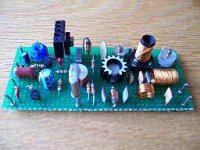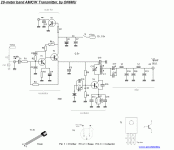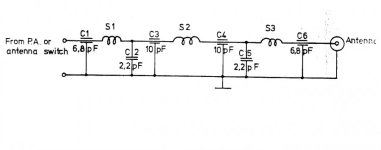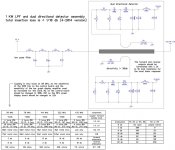با عرض سلام
یه مدار فرستنده قوی در موج sw رو مشاهده میکنید
https://sites.google.com/site/ehobbyprojects/low-cost-powerful-am-transmitter
- بهترین آنتن برای این مدار چه شکلی باید داشته باشه؟
- آیا مداری دارید که اینو به نوع pll تبدیل کنه و دو تا تیونر رو حذف کنیم؟
پیشاپیش سپاسگذارم
سلام
بهترین آنتن برای این مدار 1l4 موج باید استفاده کنید. که حدودا 10 الی 15 متر باید باشه البته اگه بخوای واقعا استفاده کنی با دقت محاسبه کنید.
این مدار زیاد قابل توجه نیست که pll براش بذاری . ثبات فرکانس مدار با کریستال تامین میشه . و اتصال مدار pll تریمر ها را می توانید حذف کنید.
ساده ترین و قابل دسترس ترین ای سی ها pll
[hide]
mc145152
cd4069[/hide]
بدون نیاز به میکرو کار می کنند.
موفق باشید













